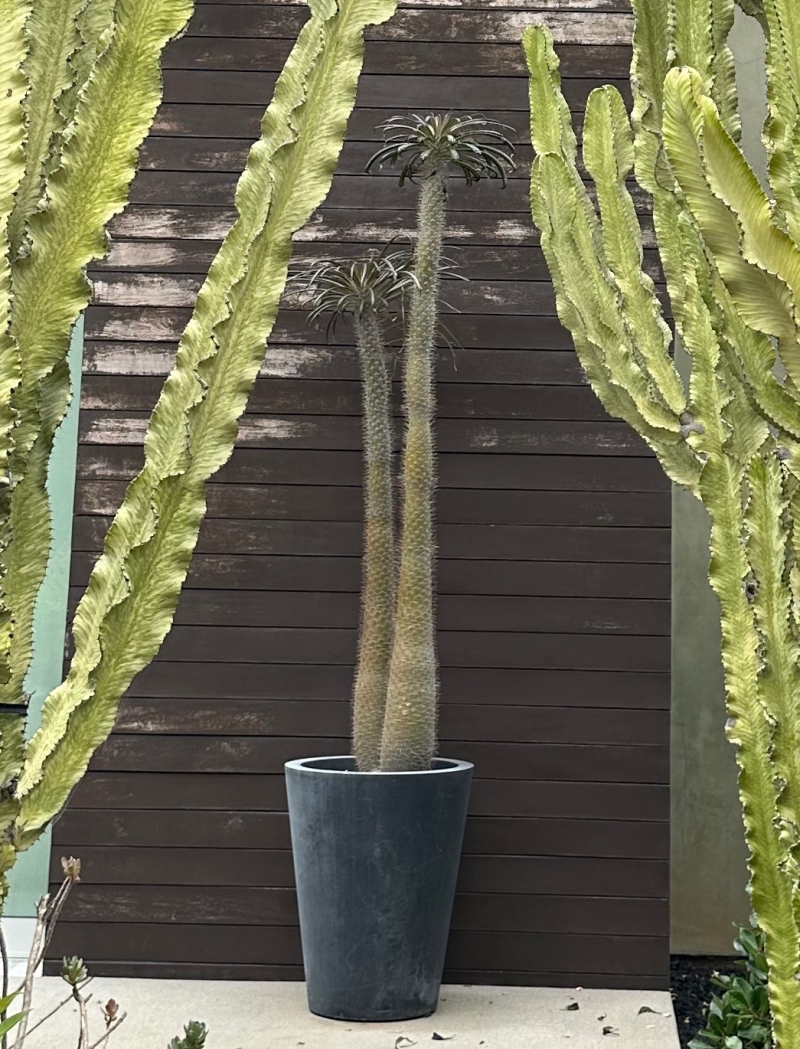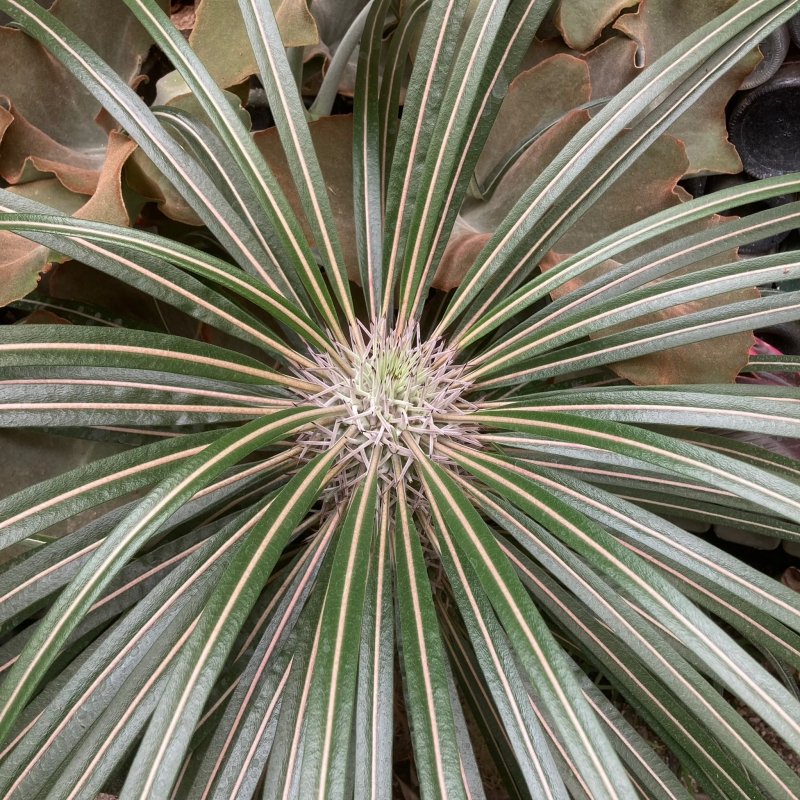


| height | 5–20 | |
| width | 2–6 | |
| tolerates | Drought, Deer , Heat, Pots, Rooftops | |
| water needs |
Low | |
| water info |
Pachypodiums are summer growers that want to go mostly dry between waterings without going completely dry when actively growing. If they are allowed to go completely dry, they’re inclined to drop their leaves. Pachypodium trunks will get a little squishy (careful getting your fingers between those spines!) when they’re ready for water and sometimes you can even see them shriveling. Once they’ve been watered, the trunk will firm up again. |
|
| hardy to |
28F | |
| exposure | Part Shade – Full Sun | |
| indoor outdoor |
Outdoor | |
| drainage | In Ground: Cactus Mix, In Pots: Cactus Mix, Requires Perfect Drainage, Tolerates Sandy Soil | |
| fertilizing | All Purpose 1/2 Strength | |
| origin | SW Madagascar | |
| california native |
No | |
| sunset zones |
22–24 |
Full Sun
Six or more hours of sun beams directly landing on the plant's leaves.
Part Shade
Three to five hours of sun beams directly landing on the plant's leaves.
Part Sun
One to two hours of sun beams directly landing on the plants leaves.
Full Shade
The plant is never fully lit by sun beams,
but is in a bright spot or has dappled sunbeams playing over the leaves throughout the day.
Deep Shade
The plant never has dappled light on the leaves, and is in a place that feels dim, even on a nice sunny day.
